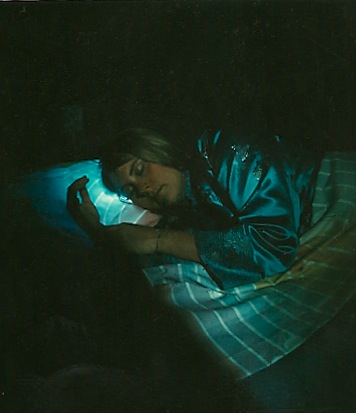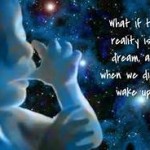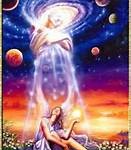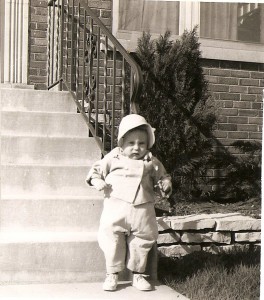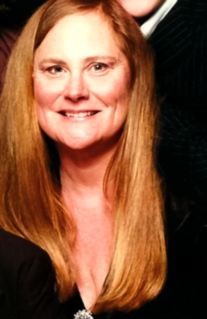Leaping Out of Dreams
Leaping Out of Dreams
Paper for the International Association for the Study of Dreams (IASD) 2015 PsiberDreaming Conference (PDC) © by Beverly D’Urso, PhD
What if a dream character gets stuck in a dream? Why does a person become frustrated? How does a spiritual seeker reach enlightenment? None of them realize they are dreaming, so what can they do? Becoming aware of internal struggles and allowing all experiences can help, but who really wakes up?
When a human falls asleep, it can have unique experiences as a dream character. We call these experiences dreams. Dreams can have particular value if the dreamer, the one asleep, becomes lucid. The distinction between the dream character and the dreamer seems important to understanding lucidity. In a sense, the “mind” of the dream character expands more into the “mind” of the dreamer. From my perspective, the dreamer, not the dream character, gets lucid to some degree within the dream, and sometimes the dreamer only gets partially lucid.
The dreamer can have profound experiences by falling asleep and entering what can feel like a realistic and three-dimensional world. This allows the dream character to have a life of its own. The lucid dreamer can decide that the dream character will have experiences, such as the feeling of flying to the sun, which do not seem possible when the dreamer is not sleeping.
If the dream character naturally has such experiences and recognizes their unique flavor, lucidity increases. When the dream character realizes that it, as well as every element of the dream, exists as a figment of the “mind” of the dreamer, the dream character acts with less fear and treats others differently. This realization can also help the dreamer understand itself, or merely create some interesting dramas.
When a dream character’s attempt to wake up out of a dream fails, the dreamer likely has only partial lucidity. If a character really knew it existed as an element of a dream, it would feel confident that the dreamer will eventually wake up when appropriate. This happens easily when the dream character and the dreamer absolutely know themselves as one and the same, although this process might get overrun by the “truer self” of the dreamer defined below.
With such deep lucidity, a dream character can wake up out of dreams. I learned early in my life, however, not to wake up out of a dream to avoid difficult situations. At the age of seven, I first viewed a recurring nightmare as a dream. In the nightmare, I wanted desperately to change my experience, and I felt powerless to do so. I surrendered to the experience of the dream completely at the same moment that I knew without a doubt that I was dreaming. This resulted in my first lucid dream.
After this, as a lucid dreamer, I often woke myself up out of dreams when it seemed appropriate, although my dreams often got repeated if I woke myself up because of resistance. In any case, I didn’t always have full lucidity. Occasionally, I would dream that I was falling forever. Feeling that I was dreaming, I wanted desperately to wake up. Through the years, I tried many potential solutions. If I still had a body, I might attempt to fall asleep in the dream. Years later, I learned to meditate in the dream instead. When I relaxed, my inner struggle slowed down, and I woke up more easily, usually at the moment that I surrendered completely to my experience.
Waking up out of a dream became more difficult when I dreamed of myself as mere consciousness in a state of endless nothingness without a body, which I have called dreams of the “gray space.” Eventually, I trusted that I would wake up when appropriate. This helped, as long as I didn’t expect to wake up immediately. Understanding that consciousness alternates between deep sleep and dreams, allowed me to calmly wait to wake up into another dream or get to deeper sleep. I later viewed my waking life as just another “dream.”
Stephen LaBerge: The Doctor of Dreams [5]
By the time I began lucid dreaming research at the Stanford sleep lab, waking myself up out of dreams seemed simple. I would consciously fall into a lucid dream and signal with my dream character’s eyes that I knew I was dreaming. Then, my dream character would perform a task and signal that the dreamer planned to wake up shortly, again without losing consciousness. EEG machines with electrodes recorded all this as it happened. They also demonstrated that I was physically sleeping the whole time and that my signals occurred during REM sleep.
Since then, I have taught and presented on lucid dreaming for many decades and have heard from countless lucid dreamers. Many of them write to me about their struggle to control their dream, remain in the dream, or wake themselves up. One person actually attempted suicide as a dream character in order to wake up out of a dream, only to have the frustrating dreams continue night after night. I tell people to trust their current experience and learn to surrender to it as much as possible, without attempting to change it. Only the dreamer can make changes, and only after the dream serves its purpose. The dream character who doesn’t know itself as the dreamer cannot do much.
In recent decades, my interests in lucidity have grown to include not only the sleeping state, but the waking state as well. Since 1990, I have taught and presented on what I call “lucid living,” or viewing life as a lucid dream. This has led me to the study of psychological-based spirituality.
Spiritual seekers often get told that they are sleeping, and that they need to wake themselves up to become enlightened. I view enlightenment as waking up within one’s life. Similar to partially lucid dreamers, spiritual seekers can feel frustrated and struggle to become enlightened. Can humans actually make themselves enlightened or wake themselves up? When they do become enlightened, who really wakes up?
As when I distinguished the dream character from the dreamer, a distinction between what I’ll call a “human” and their “truer nature” seems important. I use the term human as a shortcut for an earthborn person in waking life. In my work, I view this truer nature as part of the Dreamer of life [1]. The spiritual teacher, Almaas, refers to the soul [2] and Living Being [3]. Others call this truer nature an aspect of God.
This truer nature can have interesting experiences by becoming human and entering what can feel like a realistic and three-dimensional world. The process allows the human to have a life of its own. In my work, I view the human’s life as a “dream,” often with unique time/space issues [1]. A human’s truer nature can decide that it will have experiences that don’t seem possible when it is not sleeping. To learn about itself, or for the sake of drama, it might need to experience frustration or judgment as a human, while its truer nature’s natural essence involves power and acceptance.
I learned to use my dreams to improve my life [6]
If the human naturally has such experiences and recognizes their unique flavor, enlightenment increases. When the human realizes that it, as well as every element of its world, exists as a figment of its truer nature, the human acts with less fear and treats others differently. This realization also helps its truer nature understand itself. Therefore, the truer nature of a human becomes enlightened, or wakes up within its life, not the human. Almaas says that “the ‘soul’ wakes up” [2] and that “‘Living Being’ attains enlightenment.” [3]
When a human’s attempt to become enlightened fails, its truer nature probably has only partial enlightenment. If a human really knew it existed as an element of its truer nature, it would feel confident that its truer nature will eventually become enlightened when appropriate. Perhaps spiritual teachers should aim to have the truer nature of a human become lucid, or realize, in a sense, that it is dreaming, instead of asking a human to wake up.
With deep enlightenment, I also believe that a human can wake up out of its life. I compare waking up out of life to death. My sleep experiences lead me to believe that after death a human’s true nature continues a life/waking up cycle. However, it might have an experience similar to my gray space or remain in deep sleep, or total non-experience. In any case, what can a human do but accept its current experience, not struggle to change it, and let its truer nature deal with its death? Most likely, life and death happen most effectively when a human and its truer nature absolutely know themselves as one and the same.
In conclusion, becoming aware of internal struggles and allowing all experiences can lead both dream characters and humans to act with less fear, treat others differently, and have valuable insights. Becoming lucid involves waking up within a dream. With enough lucidity, easily waking up out of a dream can happen. Becoming enlightened involves waking up within life. With enough enlightenment, easily dying, or waking up out of life, seems possible as well. With a dualistic perspective, I have distinguished the dream character from the dreamer and a human from its true nature in order to better understand lucidity and enlightenment. However, when the dream character fully knows itself as the dreamer and the human fully knows itself as its truer nature, the dualistic perspective becomes non-dual.
References
[1] Lucid Dreaming-Lucid Living: Papers and Work of Beverly D’Urso, 1982 – 2015. http://wedreamnow.info/
[2] Inner Journey Home: Soul’s Realization of the Unity of Reality. A. H. Almaas, Shambhala Publications, December 11, 2012. http://www.ahalmaas.com/books/inner- journey-home
[3] Runaway Realization: Living a Life of Ceaseless Discovery. A.H.Almaas, Shambhala, October 21, 2014. http://ahalmaas.com/books/runaway-realization
[4] “Design your own dreams,” about Beverly Kedzierski (D’Urso), Omni Magazine, March, 1982.
[5] “Stephen LaBerge: The Doctor of Dreams,” about Beverly Kedzierski (D’Urso), LIFE Magazine, November, 1986.
[6] “I learned to use my dreams to improve my life,” about Beverly (Kedzierski Heart) D’Urso, First for Women Magazine, Volume 8, Issue 26, June 24, 1996.
